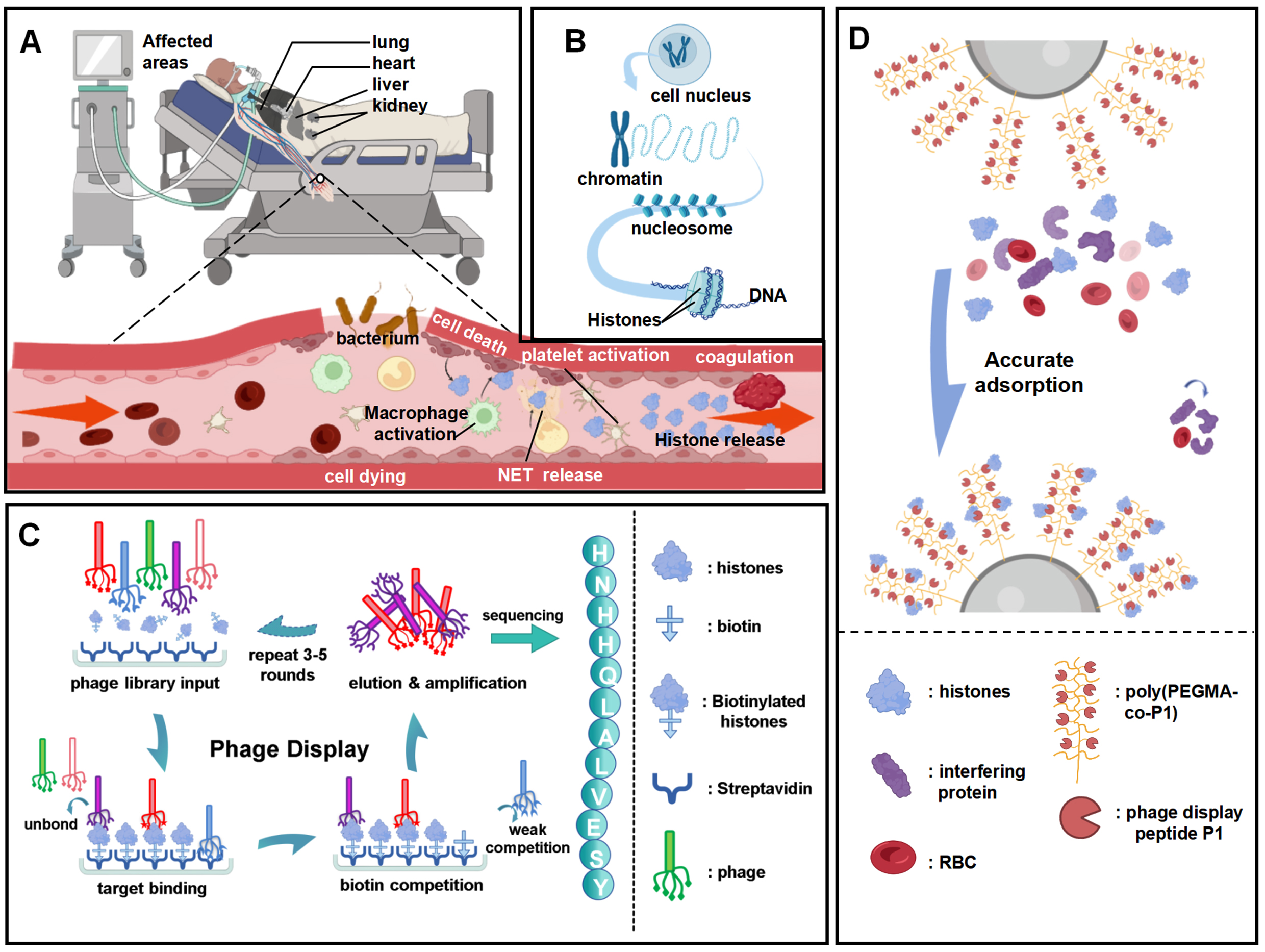Yan Li, Yue Sun, Xiaoyu Zhang, Dongdong Wang, Xindi Yang, Haijie Wei, Cunli Wang, Zhenqiang Shi, Xiaonan Li, Fenglin Zhang, Wenjing Sun, Zhiying Yang, Yanling Song,* and Guangyan Qing*
ACS Applied Materials & Interfaces, 2024, 10.1021/acsami.4c07494.
https://pubs.acs.org/doi/full/10.1021/acsami.4c07494
Sepsis is defined as a life-threatening organ dysfunction caused by a dysregulated host response to infection. Research indicates that circulating histones, as pathogenic factors, may represent a therapeutic target for sepsis. However, effectively clearing circulating histones poses a challenge due to their structural similarity to normal blood proteins, their low abundance in the bloodstream, and serious interference from other blood bio-macromolecules. Here we design a dodecapeptide-based functional polymer that can selectively adsorb circulating histones from the blood. The peptide, named P1 (HNHHQLALVESY), was discovered through phage display screening and demonstrated a strong affinity for circulating histones, while exhibiting negligible affinities for common proteins in the blood, such as Human Serum Albumin (HSA), Immunoglobulin G (IgG), and transferrin (TRF). Furthermore, the P1 peptide was incorporated into a functional polymer design, poly(PEGMA-co-P1), which was immobilized onto a silica gel surface through reversible addition-fragmentation chain transfer polymerization. The resulting material was characterized using solid nuclear magnetic resonance, thermo gravimetric analysis, and X-ray photoelectron spectroscopy. This material demonstrated the ability to selectively and efficiently capture circulating histones from both model solutions and whole blood samples, while also exhibiting satisfactory blood compatibility, good anti-fouling properties, and resistance to interference. Satisfactory binding affinity and efficient capture capacity toward histone were also observed for the other screened peptide P2 (QMSMDLFGSNFV)-grafted polymer, validating phage display as a reliable ligand screening strategy. These findings present a approach for the specific clearance of circulating histones and hold promise for future clinical applications in blood purification toward sepsis.
